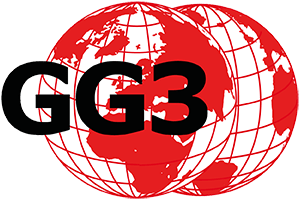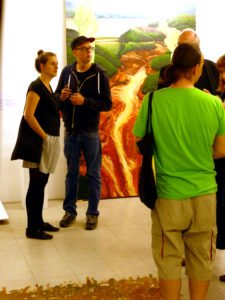By curator Tom Albrecht at the vernissage on 24.8.2018
It is our interest to show the value of the soil, the life that is in it and its threat.
Three artists Matthias Fritsch, Irene Hoppenberg, Kirsten Wechslberger. worked four weeks in the Academy for Sufficiency in the Priegnitz and her works are part of this exhibition. We are surprised about their productiveness there.
I introduce the artists in alphabetical order.
Tom Albrecht will attend the artist talk on 14.9. in a collective dialogical action valorises floors of guests. Dear Guests, You are asked to bring a handful of soil from a location of your choice.
Ana Brotas from Portugal shows in her video a scientific “Fragmented Forest Exercise” in which square areas of the forest are carefully cleaned.
Lioba von der Driesch shows modified children’s toys as the western industrial society builds on the global plunder of the soil.
The research group art created a symbol that represents the mystical-kinship connection between flora, fauna and the important resource earth.
At the residency, Matthias Fritsch produced videos and furniture prototypes of salvaged, yet untreated materials that lead to a more sensible use of finite resources and closed material cycles. The highest rank is the soil.
Stephan Groß: His collage “The Skin of the Earth” shows a fragile, complex and fascinating ecosystem that constantly restructures itself. Like the largest human organ, it sees soil as a central condition of our lives.
Regan Henley from USA finds another way to the ground. In her video in a Guided Mourning Session, she aims to analyze and facilitate the practice of ritualized and planned mourning. The objects flower and the ground serve as a reminder of the natural process of dying.
Irene Hoppenberg shows with her potato sculpture the importance of the potato for us as a familiar, regional, tasty base food.
Barbara Karsch-Chaïeb points out in her photograph with Veroner’s green earth that the basis of life for the cultivation of food is the soil to be treated with more care. In her performance, she will immediately give respect to earth and soil as Mother Earth.
Maria Korporal: In her interactive installation, the earth needs our breath to be fruitful.
Clement Loisel: His painting shows the consequences of a toxic mud disaster in Brazil as an open wound in the ground.
For his digitally processed photography, Uwe Molkenthin establishes a relationship between man, a karstified soil and the surface of a bread.
In today’s performance, Annegret Müller sees the earth as a gift from which we live and trust.
With her zinc tub, Sabine Naumann-Cleve demonstrates how fertile soil can easily be produced in any household by fermenting organic kitchen waste. She forms in her object from Graberde a cake that can also be seen as a gold bar.
In her audiovisual improvisation with Rieko Okuda, Oliver Orthuber will make a connection with the homeland, the place of birth at the finissage.
Through his flower machine, Oliver Orthuber wants to work out the aspect of technology that exploits the soil in an exploitative way and at the same time gives people a curse and a blessing.
Kirsten Wechslberger uses her sculptures made of bioplastics and sand to bring into our field of vision the living beings that are invisible to us humans.

